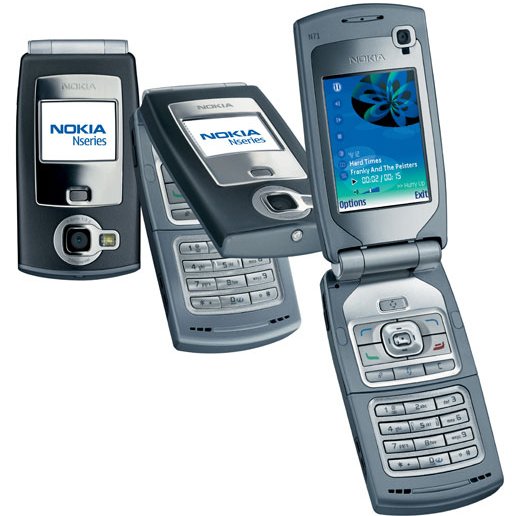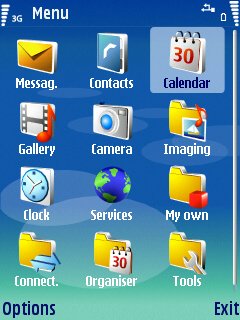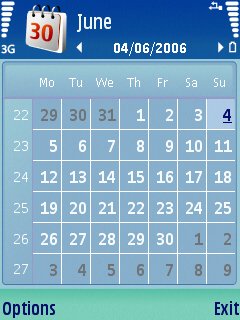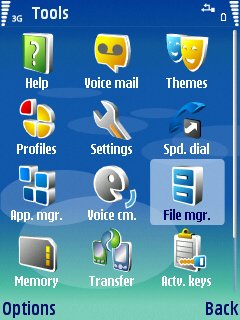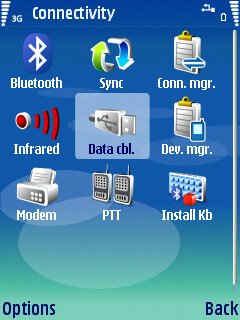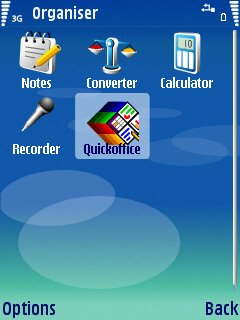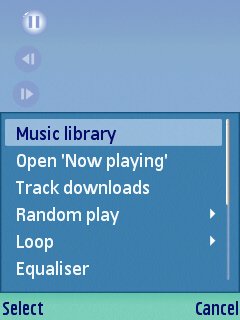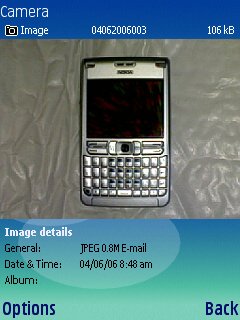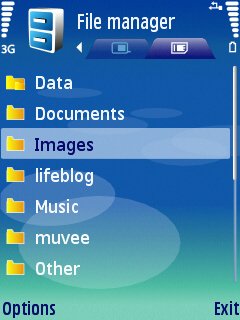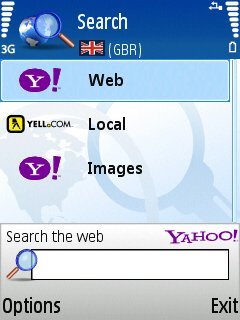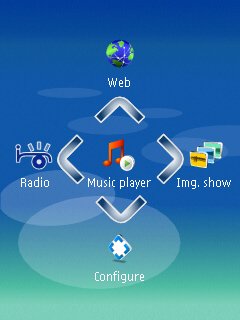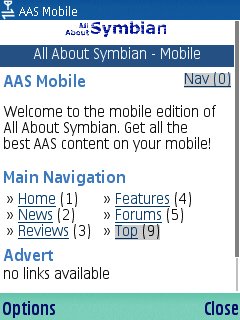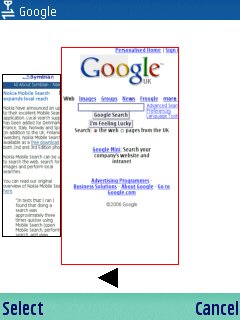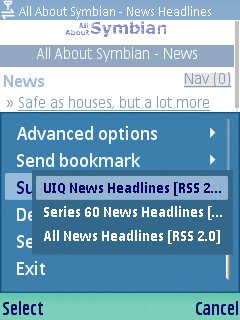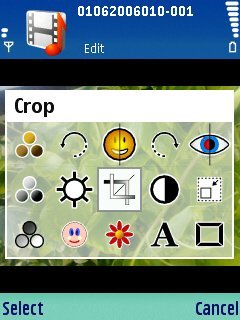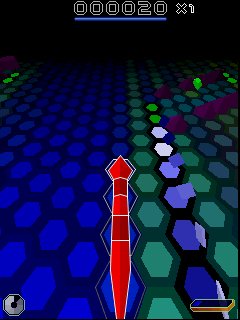Ah, the N82 a mix between all the power of my N95 and the mixed styling of my beloved K850i and N70.
Perfect.
That was my opinion when I got it but after a week with it what do I think of it?
Lets find out.
Positives
+ Solid Build Quality.
+ Nice Stylish Design.
+ 5mp, CZ Optics, Auto-Focusing camera with a Xenon Flash.
+ 2.4" display.
+ 3G and HSDPA.
+ 128MB or RAM.
+ Symbian OS 9.2 Series 60 3rd edition Feature Pack 1 UI.
+ Standard Jacks!
+ TV-Out.
+ Built In GPS.
+ Auto UI Rotation.
+ Stereo Speakers.
+ Large Battery.
+ Camera Lens Cover.
+ Looks good in Silver, even better in Black.
+ Micro SD
Main Disadvantages
- Bad Maps Application Installed, has never worked for me.
- Fingerprint Magnet In Silver
- No charging via USB
- Micro USB not as standard as Nokia would like you to think.
- Small keys, may be a problem for some
- Early Silver Models Keys Were Illegible In Bright Sunlight ( A Problem Highlighted By Steve Litchfield Of AAS, may not be a problem for power users who type with out looking but may be a major shortcoming for the average user.)
In this review I will [u]NOT[/u] compare camera samples from the K850i and the N82. Plenty are available from around the web which I will link to.
The most popular N-Series phones to date have been the: N70,N73 and the N95. Nokia has realised that users loved the design and price of the N70 and N73, but wanted the features of the N95.
The N82 is the N73's rightful successor just stuffed with N95 features, one thing that stopped me upgrading to an N73 a year ago was lack of Wi-Fi, no such problems here!
Nokia recommend that the N82 retails for about 450 Euros before tax, which sounds reasonable, considering most packages include a 2gb Micro SD Card.
Last year Nokia decided to start fitting most of their high and mid range devices with standard jacks. This means you can listen to your music via your own headphones.
The device will sync with Windows Media Player, this is better than drag and drop but following
RIM's lead would make this really great.
Sound quality is good, with 5 Equaliser presets and the option to tune the Equaliser exactly how you like it. The sound quality is exactly on par with my N95. Like the N95, the phone includes Stereo Widening and Loudness. Both of which can be useful depending on which type of music you are listening too. An option to change the balance between left and right is also included but I have never had the need to use this. Searching through your music is as simple as taping in a few letters and playlists can be easily made and modified. Out of the box the phone includes support for MP3, AAC, eAAC+ and WMA with supposrt for .OGG easily added through OggPlay. No dedicated Hotkeys are on the phone but using the D-Pad makes for a pain free experience. the phone does come bunduled with a remote, but unlike the N95's can't be detached from the headphones. Album art is displayed next to song details and looks quuite nice, however Nokia have let you add album art while on the phone instead of having to use a computer which I find is a nice touch. In the end the N82 can easily be used as a Music Player and storage is cheap for the phone. Overall I find the 3.5mm jack to be in the perfect postion, on the top unlike the N95's which resides on the side of the device.
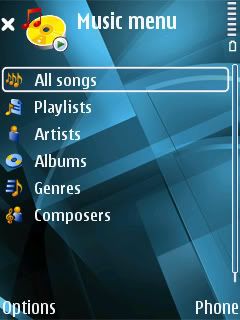
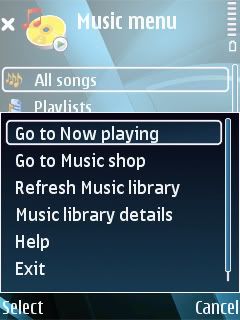
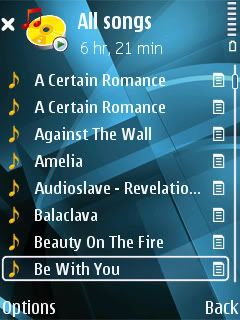



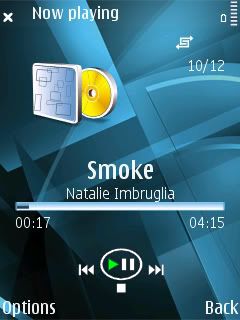
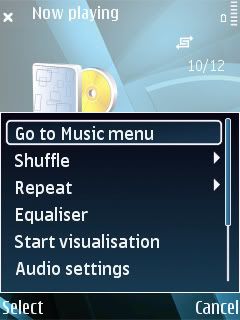
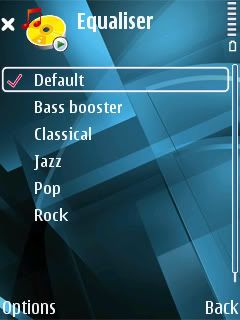
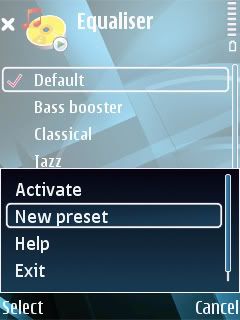
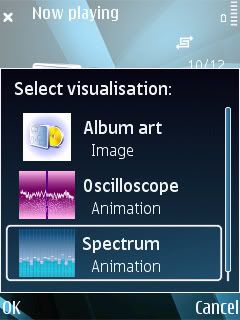
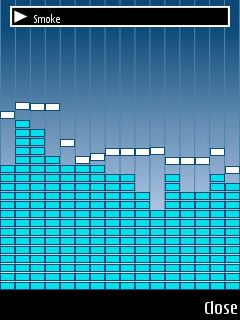

The camera is the usual Nokia affair, lots of megapixels, a carl zeiss lens, auto-focus but what's this? Xenon flash? Yes. Something that was missing badly from the N95 and one of the main differences between the devices. The N82 also includes a much better lens cover which slides up and down with a "click" at each end. The back of this phones really does look like a digital camera! The device also manages to perform like one, even in low light, when unlike the K850i it does not over-expose it's subjects. The Macro on the device is also impressive managing good close-ups. Nokia's camera interface is nice and usable. Offering the ability to change the focus mode, flash settings, self timer, sequence settings, colour tone, white balance, exposure compensation, sharpness, contrast and ISO settings. Sequence mode is like Best Pic on Sony Ericssons except a bit more configurable, it is a useful tool if used in the right way.
Like the N93 and N95 before it the N82 includes VGA video recording at 30fps. It performs very well unless your moving or shaking while recording then it gets a bit jumpy. Sound recording is good, but heavy breathing is picked up on while recording which is a shame.
At the moment the N82 is the best camera on the market, unless you want optical zoom, that'll be a Samsung G800. The phone itself won't be surpassed until the 8mp brigade start coming out in around October or November.
At first glance, one could fail to see how the N82 fits into Nokia's current line up.
* Nokia N95 – 480-500 Euro;
* Nokia N82 – 450 Euro;
* Nokia N81 8Gb – 430 Euro.
(Prices are Nokias SRP and are as of when the N82 was released.)
After just seeing this you may ask, it's just an N95 with Xenon flash at a slightly lowered price. The reason why is the N82 isn't designed to complement Nokia's other offerings but to directly rival the Sony Ericsson K850i, which also has an SRP of 450 Euros. The N82 really is an N95 with added features and styling from the K850i.
Xenon flash, built in accelerometer, slim keys, glossy finger-print loving plastic and rear's styled to be like digital cameras. Except all the things the Ericsson does Nokia have decided to do one better. For starters the cameras are both 5 mega-pixels, auto-focusing with Xenon flash but Nokia have included a Carl Zeiss approved lens and better video recording. The SE has a 2.2" screen whereas the N82 has a 2.4" screen. However the most important part for me is Symbian Series 60 (S60) put on to make it a smart-phone. That's enough comparing of these two for now, although I may decide to write a separate review in the future.
The N82 fares well on day to day usage and even after heavy use still manages 2 days.
Although this is with the phone turned off at night. the phone is a nice size, just a little bigger than the K850i and a good thickness. It weighs in at 114g making noticeable in your pocket but not heavy. The stereo spekers are good and loud. The phone has a strong signal and good call quality and I ahve no issues typing on the keypad with my small fingers.
The phone had a 1050mah battery fitted which is good for -
* Navagation with GPS – 3.5-4 hours
* Video watching – 4 hours
* WEB-surfing (EDGE) – 3 hours
* Wi-Fi – 3.5 hours
* Music (in earphones) – 11.5 hours
* Games – 4.5 hours (SNAKES)
The phone takes 2 and a half hours to charge from dead to full battery.
The phone has 100mb of built in memory, easily expandable via MicroSD.There is no word on a limit for the phone so it should easily take 8gb.
The build quality of the phone is very good. No creaks or gaps. The back feels solid and the front feels fine,except it loves fingerprints.
I will edit this section when I get maps working on my phone and do a overview of the whole experience.
The improved Nokia multimedia menu that was first included on the N81 is here.
It shows you Music, Gallery, Contacts, Internet, Maps and Games.
Extras-
Calender -
Exactly what it says on the tin, can set reminders and alarms and meetings from here.
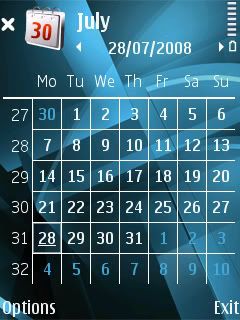
Notes-
Compatible with MS Word documents, also ability to send via bluetooth to other mobiles.













 Communication & Messaging
Communication & Messaging 

























